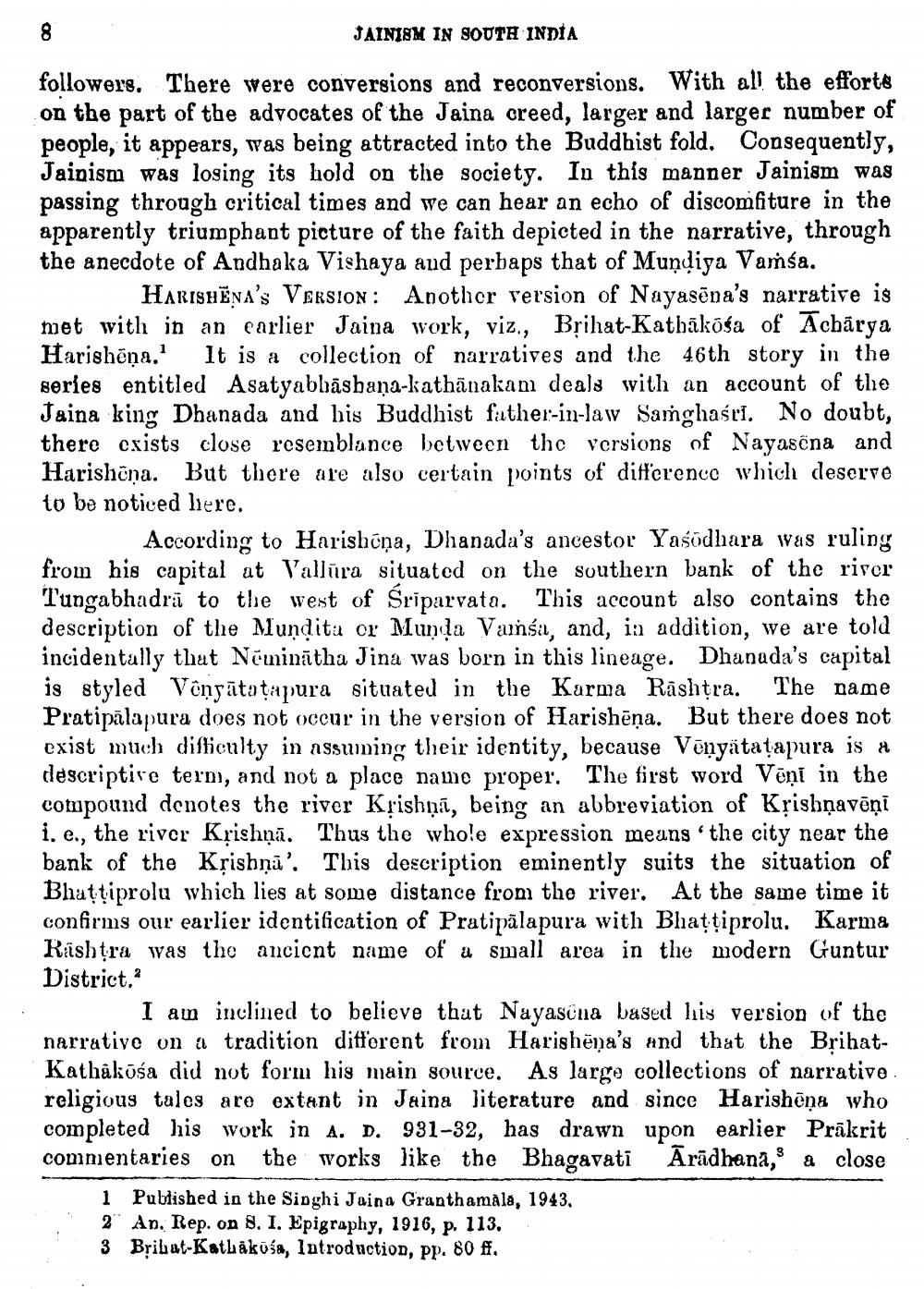________________
8
JAINISM IN SOUTH INDIA
followers. There were conversions and reconversions. With all the efforts on the part of the advocates of the Jaina creed, larger and larger number of people, it appears, was being attracted into the Buddhist fold. Consequently, Jainism was losing its hold on the society. In this manner Jainism was passing through critical times and we can hear an echo of discomfiture in the apparently triumphant picture of the faith depicted in the narrative, through the anecdote of Andhaka Vishaya and perhaps that of Mundiya Vamsa.
HARISHENA'S VERSION: Another version of Nayasena's narrative is met with in an earlier Jaina work, viz., Brihat-Kathakōsa of Acharya Harishēna.' It is a collection of narratives and the 46th story in the series entitled Asatyabhashana-kathanakam deals with an account of the Jaina king Dhanada and his Buddhist father-in-law Samghasri. No doubt, there exists close resemblance between the versions of Nayasena and Harishēna. But there are also certain points of difference which deserve to be noticed here.
According to Harishona, Dhanada's ancestor Yasodhara was ruling from his capital at Vallura situated on the southern bank of the river Tungabhadra to the west of Śriparvata. This account also contains the description of the Mundita or Munda Vansa, and, in addition, we are told incidentally that Neminatha Jina was born in this lineage. Dhanada's capital is styled Venyataṭapura situated in the Karma Rashtra. The name Pratipalapura does not occur in the version of Harishēna. But there does not exist much difficulty in assuming their identity, because Venyataṭapura is a descriptive term, and not a place name proper. The first word Veni in the compound denotes the river Krishna, being an abbreviation of Krishṇavēņī i. e., the river Krishna. Thus the whole expression means 'the city near the bank of the Krishna'. This description eminently suits the situation of Bhattiprolu which lies at some distance from the river. At the same time it confirms our earlier identification of Pratipalapura with Bhattiprolu. Karma Rashtra was the ancient name of a small area in the modern Guntur District.2
I am inclined to believe that Nayasena based his version of the narrative on a tradition different from Harishena's and that the BrihatKathakōsa did not form his main source. As large collections of narrative religious tales are extant in Jaina literature and since Harishēņa who completed his work in A. D. 931-32, has drawn upon earlier Prakrit commentaries on the works like the Bhagavati Aradhana, a close
1 Published in the Singhi Jaina Granthamala, 1943.
2 An. Rep. on S. I. Epigraphy, 1916, p. 113.
3 Brihat-Kathakosa, Introduction, pp. 80 ff.




